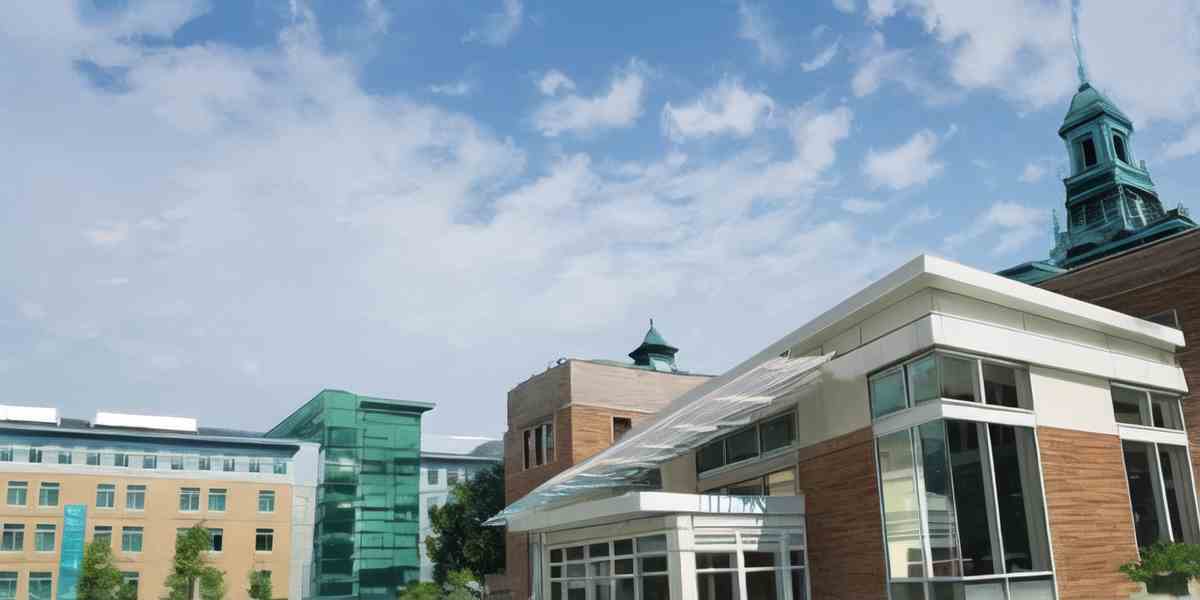Simmons University
2024 USNews Best Colleges Ranking: 151(→) (Click for schools/majors ranking)
School Characteristics: Private, non-Profit (4-Years)
Calendar systerm: Semester
Religious Affiliation: Not applicable
School Chief: Lynn Perry Wooten (President)
Website: www.simmons.edu/; Phone: 6175212000
Location: 300 The Fenway, Boston, MA, 002115-5898

Simmons University Important Facts
Simmons University Degrees and Majors
Simmons University Ranking and Admission
Simmons University Admission Score Requires
*Numbers at left represent SAT/ACT submitting percentage, numbers on blue blocks represent 25%-75% admission scores
**Drag green block to check data for different years, click blue block to check scores trends
Simmons University Students Diversity
Simmons University Students Age Distribution
Simmons University International Students Trends
Simmons University Campus and Safety
Nearby Top Colleges
Campus Safety
Reference
- Simmons University Official Website
- USNews Best Colleges Ranking
- USNews Bset Global Universities Ranking
- THE World University Ranking
- QS World University Ranking
- ARWU World University Ranking
- US Department of Education College Scorecard
- National Center for Education Statistics
- Forward Pathway US College Ranking Database
 Simmons University Important Facts Trends
Simmons University Important Facts Trends
 Simmons University degrees/majors
Simmons University degrees/majors
Simmons University major details
*Depends on whether majors have graduates in 2022 or not, Yes / No
**Move mouse on can check deitaled graudates number, click for major detailed information
***Due to privacy policy, graduate salaries are not shown for some majors that has few gradautes
| Major | Graduate Salary | Under | Master | Doctor |
|---|---|---|---|---|
| Health/Health Care Administration/Management. | - | |||
| Public Health, General. | $65,418 | |||
| Public Health Education and Promotion. | $65,418 | |||
| Physical Therapy/Therapist. | $71,188 | |||
| Dietetics/Dietitian. | $61,943 | |||
| Registered Nursing/Registered Nurse. | $79,398-$110,716 | |||
| Family Practice Nurse/Nursing. | $79,398-$110,716 | |||
| Health Professions and Related Clinical Sciences, Other. | - |
| Major | Graduate Salary | Under | Master | Doctor |
|---|---|---|---|---|
| Public Policy Analysis, General. | - | |||
| Social Work. | $58,336-$61,489 |
| Major | Graduate Salary | Under | Master | Doctor |
|---|---|---|---|---|
| Library and Information Science. | $55,057 | |||
| Children and Youth Library Services. | $55,057 | |||
| Archives/Archival Administration. | $55,057 |
| Major | Graduate Salary | Under | Master | Doctor |
|---|---|---|---|---|
| Psychology, General. | $53,012 | |||
| Applied Behavior Analysis. | $72,166 |
| Major | Graduate Salary | Under | Master | Doctor |
|---|---|---|---|---|
| Educational Leadership and Administration, General. | - | |||
| Special Education and Teaching, General. | $61,018 | |||
| Education/Teaching of Individuals in Elementary Special Education Programs. | $61,018 | |||
| Elementary Education and Teaching. | $57,223 |
| Major | Graduate Salary | Under | Master | Doctor |
|---|---|---|---|---|
| Economics, General. | - | |||
| Econometrics and Quantitative Economics. | - | |||
| International Relations and Affairs. | - | |||
| Political Science and Government, General. | $46,815 | |||
| Sociology, General. | - |
| Major | Graduate Salary | Under | Master | Doctor |
|---|---|---|---|---|
| English Language and Literature, General. | $49,781-$59,542 | |||
| Writing, General. | - | |||
| Creative Writing. | - | |||
| Children's and Adolescent Literature. | $55,766 |
| Major | Graduate Salary | Under | Master | Doctor |
|---|---|---|---|---|
| Foods, Nutrition, and Wellness Studies, General. | $54,136 |
| Major | Graduate Salary | Under | Master | Doctor |
|---|---|---|---|---|
| Biopsychology. | - |
| Major | Graduate Salary | Under | Master | Doctor |
|---|---|---|---|---|
| Exercise Science and Kinesiology. | $67,028 |
| Major | Graduate Salary | Under | Master | Doctor |
|---|---|---|---|---|
| Biology/Biological Sciences, General. | - | |||
| Biochemistry and Molecular Biology. | - | |||
| Biostatistics. | - |
| Major | Graduate Salary | Under | Master | Doctor |
|---|---|---|---|---|
| Speech Communication and Rhetoric. | $54,370 | |||
| Public Relations, Advertising, and Applied Communication. | - |
| Major | Graduate Salary | Under | Master | Doctor |
|---|---|---|---|---|
| Business Administration and Management, General. | $67,024-$87,717 | |||
| Accounting. | - | |||
| Finance, General. | - | |||
| Marketing/Marketing Management, General. | $75,956 |
| Major | Graduate Salary | Under | Master | Doctor |
|---|---|---|---|---|
| History, General. | $55,125 |
| Major | Graduate Salary | Under | Master | Doctor |
|---|---|---|---|---|
| Computer and Information Sciences, General. | - | |||
| Information Technology. | - | |||
| Web Page, Digital/Multimedia and Information Resources Design. | - |
| Major | Graduate Salary | Under | Master | Doctor |
|---|---|---|---|---|
| Computational Mathematics. | - |
| Major | Graduate Salary | Under | Master | Doctor |
|---|---|---|---|---|
| Women's Studies. | - | |||
| Ethnic, Cultural Minority, Gender, and Group Studies, Other. | - |
| Major | Graduate Salary | Under | Master | Doctor |
|---|---|---|---|---|
| Art/Art Studies, General. | - | |||
| Music, General. | - | |||
| Fine and Studio Arts Management. | - |
| Major | Graduate Salary | Under | Master | Doctor |
|---|---|---|---|---|
| Environmental Science. | - |
| Major | Graduate Salary | Under | Master | Doctor |
|---|---|---|---|---|
| Chemistry, General. | - |
| Major | Graduate Salary | Under | Master | Doctor |
|---|---|---|---|---|
| French Language and Literature. | - | |||
| Spanish Language and Literature. | - |
| Major | Graduate Salary | Under | Master | Doctor |
|---|---|---|---|---|
| Philosophy. | - |
 Simmons University Schools/Majors Ranking
Simmons University Schools/Majors Ranking
Under Ranking (2024)
*Rankings have been updated to 2025USNews schools/majors ranking, rankings are for reference only
*numbers in bracket represent rankings change compare to last version
 Simmons University Varsity Athletes
Simmons University Varsity Athletes
| MEN | WOMEN |
|---|
| MEN | WOMEN |
|---|
| MEN | WOMEN |
|---|

 Simmons University Important Facts Trends
Simmons University Important Facts Trends
















































































































































































































































































































































































































































